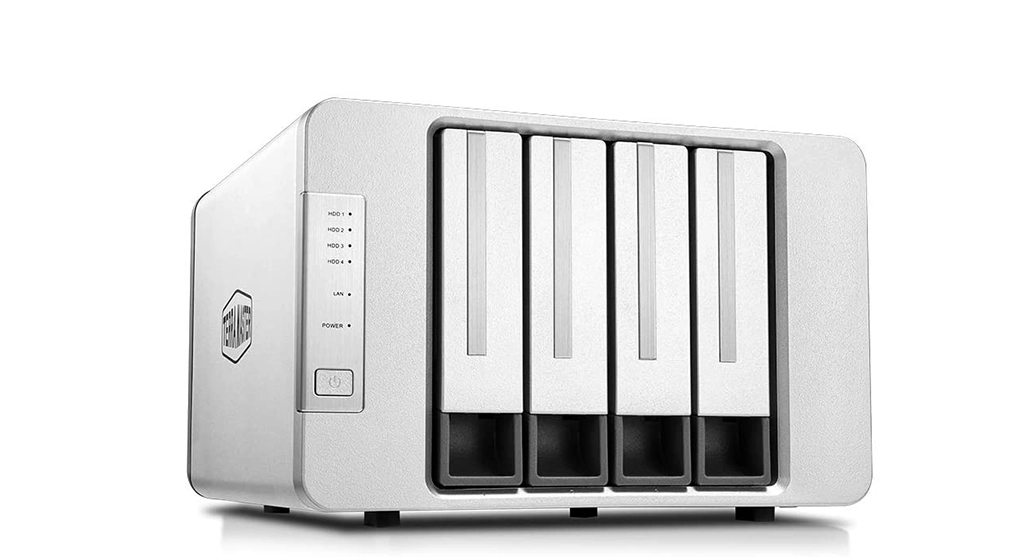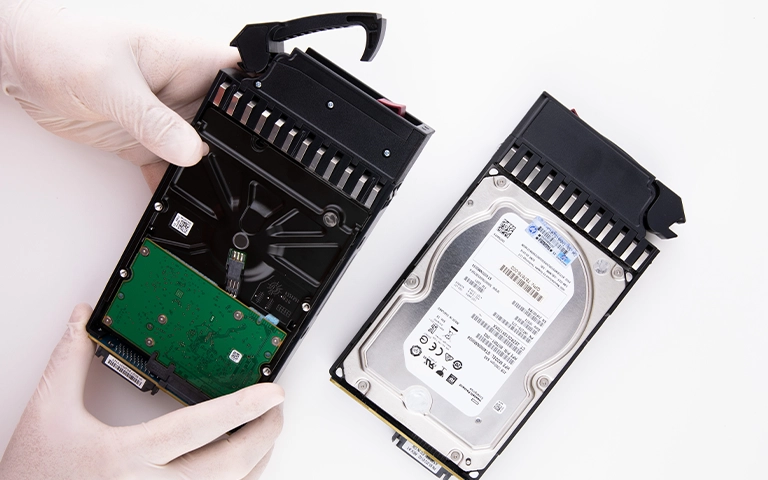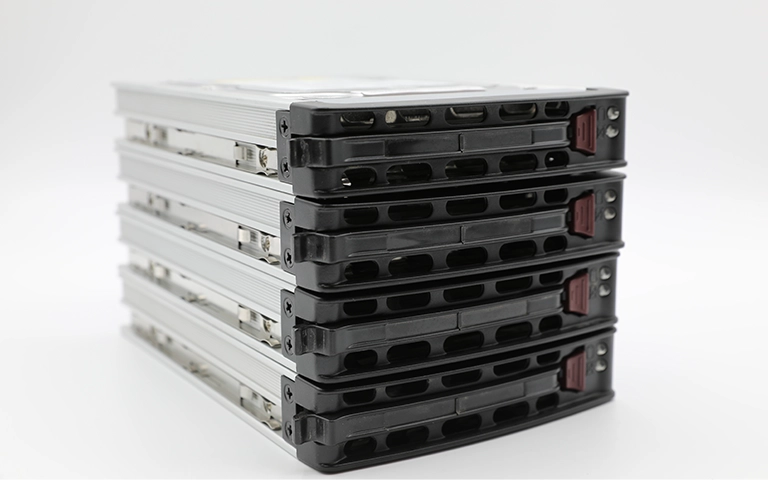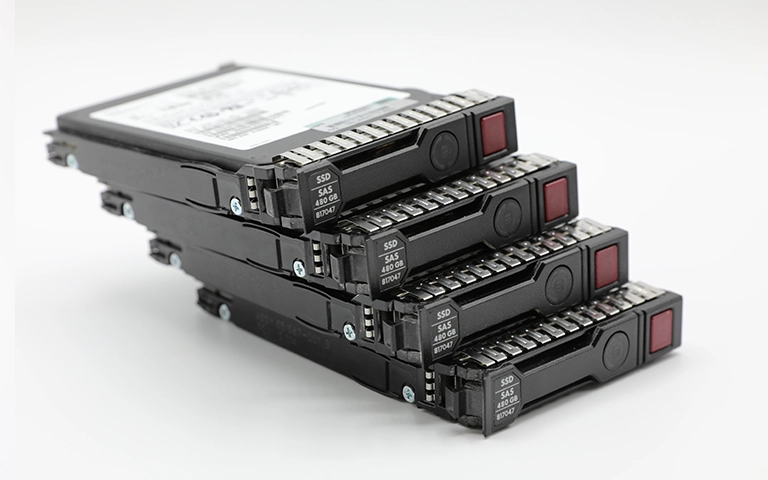When you manage large amounts of data, protecting it from drive failures is one of your top priorities. Traditional RAID levels like RAID 0, 1, and 5 provide a balance of performance and redundancy, but as storage arrays expand, so do the risks. This is where RAID 6 comes into play.
RAID 6 is based on dual parity. Instead of relying on a single parity block like RAID 5, it uses two. This extra layer of protection allows the system to continue operating even if two drives fail at the same time. It offers a strong mix of capacity, performance, and reliability, making it a common choice for enterprise storage and large NAS environments.
In this guide, you will learn how RAID 6 works, the main advantages and limitations, how it compares to RAID 5, when it should be used, and what steps to take if a RAID 6 array fails.

What Is RAID 6? Dual Parity Explained
RAID 6 is a storage setup designed to protect your data from multiple drive failures. It works like RAID 5 but adds an extra layer of security. Instead of using just one set of parity information to recover lost data, RAID 6 uses two.
This means that even if two drives in the array fail at the same time, the system can still keep running and your data remains accessible. The parity information is spread across all the drives, so no single disk carries the full responsibility for recovery.
In terms of capacity, RAID 6 always reserves the space of two drives for parity. For example, if you have six 4TB drives, you can use the storage of four drives (16TB) for data, while two drives are used to keep your information safe.
If you want to see how RAID 6 compares to other configurations, check our guide on the different types of RAID.
RAID 6 Benefits and Performance
RAID 6 is popular because it provides a strong balance of protection and efficiency. Its advantages go beyond simply tolerating two drive failures.
Key benefits of RAID 6 include:
- High fault tolerance – With dual parity, the array keeps running even if two drives fail at once. This gives you more time to replace failed drives without risking data loss.
- Reliable for large arrays – As the number of drives increases, so does the chance of simultaneous failures. RAID 6 is better suited than RAID 5 for big storage systems where risk is higher.
- Strong read performance – Reads are quick since data is striped across multiple drives. In many cases, read speeds are comparable to RAID 5.
- Data availability – Even during a rebuild, the array remains accessible, which is critical in enterprise and business environments.
While RAID 6 does introduce extra overhead during writes, it remains one of the most reliable RAID levels for environments that demand both performance and fault tolerance.

RAID 6 Limitations and Trade-Offs
While RAID 6 offers strong protection, it is not without drawbacks. Understanding these limitations will help you decide if it fits your storage needs.
Main limitations of RAID 6:
Write performance penalty – Because the system must calculate and write two sets of parity, write speeds are slower compared to RAID 5 or RAID 10.
Long rebuild times – When a drive fails, rebuilding can take hours or even days depending on array size. During this time,performance is reduced and the risk of a second failure increases. You can learn more about how different setups behave in our guide on RAID failure rates.
Lower storage efficiency – Since two drives are always reserved for parity, the usable capacity is smaller than RAID 5. For example, in an eight-drive array, only six drives are available for data.
Higher hardware demands – Dual parity requires more processing power, which can place extra load on the RAID controller.
These trade-offs do not make RAID 6 a poor choice, but they highlight the need to balance redundancy, performance, and capacity before selecting it for your system.
RAID 6 vs RAID 5: Key Differences
At first glance, RAID 5 and RAID 6 look similar because both use striping with parity. The main difference lies in fault tolerance. RAID 5 can survive the loss of one drive, while RAID 6 can survive two.
Beyond that, write performance, rebuild times, and usable capacity vary. RAID 6 requires more processing power and has slower writes, but it provides a higher level of protection for larger arrays.
If you are weighing which one suits your needs, explore our detailed breakdown in RAID 5 vs RAID 6.

When to Use RAID 6: Common Use Cases
RAID 6 is not the best fit for every storage setup, but it shines in certain environments where reliability is critical.
Common scenarios where RAID 6 is recommended:
Enterprise storage systems – Large databases, virtualization hosts, and business applications that cannot afford downtime benefit from RAID 6 fault tolerance.
NAS environments with many drives – The more drives in an array, the greater the chance of multiple failures. RAID 6 is safer than RAID 5 for large NAS deployments.
Archival storage – When write speed is less important than protecting long-term data, RAID 6 provides extra insurance against drive loss.
Critical business operations – Industries like finance, healthcare, and media production often select RAID 6 to ensure data availability even under stress.
In each of these cases, RAID 6 offers the extra margin of safety that single-parity setups cannot match. It reduces risk while keeping data available, even during unexpected failures.
Fast turnaround times for business-critical data
RAID 6 Recovery: What to Do If It Fails
Even though RAID 6 is designed for resilience, it is not immune to failure. Dual parity protects against two drive losses, but certain issues can still bring the array down. Controller malfunctions, failed rebuilds, or simultaneous drive errors can leave data inaccessible.
When this happens, it is important not to attempt DIY recovery. Running rebuilds without the right expertise can overwrite data permanently. Powering drives on and off repeatedly can also cause further mechanical damage.
If your RAID 6 array fails, the safest step is to contact professionals who specialize in complex RAID recovery.
At RAID Recovery Services, we handle RAID 6 failures caused by hardware damage, software corruption, and failed rebuilds. Our engineers have the tools and cleanroom environment needed to safely restore access to your data.
RAID 6 recovery is possible in many cases, but success depends on quick and careful action. Stop using the array immediately and seek expert help to protect your files.

How to Keep Your RAID 6 Array Healthy
RAID 6 provides strong protection, but ongoing care is essential to keep it stable and reduce risks. Regular monitoring and good practices can extend the life of your array.
Best practices for maintaining a RAID 6 array:
Monitor drive health – Use SMART monitoring and RAID controller logs to catch early warning signs such as increasing error counts.
Use enterprise or NAS-grade drives – Consumer desktop drives are not built for 24/7 operation or vibration tolerance. Dedicated RAID drives last longer under constant load.
Keep firmware and drivers updated – RAID controllers and drives often receive updates that fix stability and compatibility issues.
Check connections regularly – Loose or damaged cables can cause drives to drop from the array and trigger rebuilds unnecessarily.
Maintain proper cooling – Overheating shortens drive life and increases the risk of simultaneous failures.
Have a backup plan – Even with RAID 6, backups remain critical to protect against accidental deletion, malware, or catastrophic events.
Following these steps will not eliminate every risk, but they significantly improve reliability and reduce the chances of unexpected downtime.
Conclusion: Is RAID 6 Right for You?
RAID 6 is a powerful option when you need both performance and protection. Its dual parity design allows an array to survive two drive failures, making it safer than RAID 5 for large or business-critical storage systems. At the same time, it comes with trade-offs, including slower writes, longer rebuilds, and reduced storage efficiency.
If your environment prioritizes uptime and data safety over raw write speed, RAID 6 is often the right choice. It is widely used in enterprises, NAS environments with many drives, and industries where data availability is non-negotiable.
Still, no RAID level can guarantee complete safety. Failures do happen, and when they do, recovery requires careful handling. At RAID Recovery Services, we specialize in RAID 6 recovery and can help restore access to your data quickly and securely.
Need expert help with a RAID 6 failure? Contact RAID Recovery Services today to speak with a recovery specialist.

Trust the experts with proven results
Frequently Asked Questions
Can RAID 6 survive three drive failures?
No. RAID 6 can tolerate up to two simultaneous drive failures. If a third drive fails before a rebuild completes, the array will fail and data may be lost.
Is RAID 6 better than RAID 10?
It depends on your goals. RAID 6 offers higher fault tolerance and more usable capacity in large arrays, while RAID 10 provides faster write performance and quicker rebuilds.
How long does a RAID 6 rebuild take?
Rebuild time depends on array size, drive capacity, and system load. In large arrays, a rebuild can take many hours or even days, during which performance is reduced.
Do I still need backups if I use RAID 6?
Yes. RAID protects against drive failures, but not against accidental deletion, file corruption, or malware. A solid backup strategy is always required.